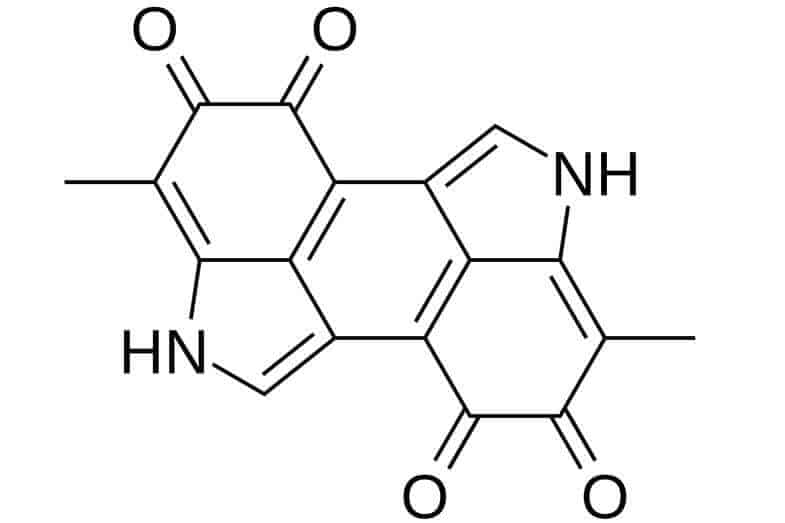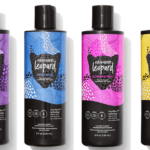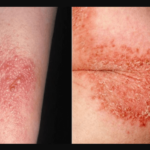Why are people around the world colored differently? Why do people living in colder climates have fairer skin than those who live in the tropics? The varied adaptive traits in human skin seem to be closely related to UV (ultraviolet) radiation and geography. This leads to the question I want to address in this article: Does skin color affect body temperature?
Skin color does affect body temperature. Those living closer to the equator have more melanin. Melanin makes the skin darker, protects the skin from UV damage, and also increases sensitivity to heat. This heightened sensitivity to heat is a helpful warning sign to avoid the intense sun.
These findings were found by Researchers at the Bluestone Center for Clinical Research at the New York University College of Dentistry [1]. There have been theories of the role of skin color, particularly the amount of melanin in the skin and heat sensitivity. Read on to learn more about does skin color affect body temperature?
Does Skin Color Affect Body Temperature?
Skin color does affect body temperature. According to the research conducted by the Bluestone Center for Clinical Research, people with lighter skin and people with darker skin tend to react differently to mechanical and heat stimulation. This drives them to conclude that the color of one’s skin contributes a lot to their body temperature.
The researchers discovered that skin cells responsible for identifying your skin color produce tiny molecules known as dopamine. Such molecules have a say in how your skin will respond to mechanical and heat stimuli. As a sensory organ, your skin can be expected to provide information regarding the environment you are in, such as pressure and temperature.
Any excess in pressure or heat can lead to the development of a pain signal, warning you about harmful inputs. The kind of environment you are in, therefore, can also have an impact on how sensitive your skin will be to certain stimulation conducted through the selective level of pressure.
The study conducted by the researchers also led to the conclusion that those who have various ethnic backgrounds and skin colors also tend to sense pressure and temperature uniquely. The people who live near the equator have a higher chance of accumulating more melanin when they are exposed to the sun.
While this can protect the skin from the damages that the UV rays might cause, this might also darken the skin. Melanocyte, a skin cell that stimulates melanin production, also tends to release dopamine, which has a major impact on your skin’s heat sensitivity.
This means that to handle extreme weather well, it is important for such skin cells to create a protective mechanism warning you to prevent too much exposure to the sun.
The research, which somewhat proves the differences in heat and mechanical sensitivity depending on what skin color you have, also contributes to how you can respond to pain when undergoing clinical or medical treatment. Skin color and pigmentation that affect heat sensitivity and body temperature influence the pain levels experienced by individuals when taking surgical or dental procedures.
With such findings, a medical professional can develop a more personalized and targeted approach to managing and treating pain.
See the below video for more on the science of skin color:
Do Dark-Skinned People Absorb More Heat?
Dark-skinned people, those who display a browner or darker shade of skin, have darker because of melanin.
Of course, those with dark skin are rich in melanin naturally, providing them a high level of protection from the negative effects of UV radiation. This is a huge help in allowing their body to maintain folate reserves while protecting themselves from DNA damage. As to whether or not having dark skin can increase your absorption of heat, the answer is yes.
Note that dark skin might cause you to heat up more, causing some changes in your body temperature. It is because your skin color also means that you can absorb more heat from the sun. Darker skin color also allows your skin to have qualities designed to improve its ability to act as barrier protection.
One thing you have to take note of, though, is that while dark skin pigmentation causes the absorption of around 30% to 40% more sunlight compared to those who have light skin pigmentation, this still does not necessarily mean that dark skin can increase the body’s intake of internal heat when dealing with conditions that have extreme solar radiation.
Also, aside from your skin color, certain factors have a say in your body’s temperature, including the air surrounding you. For example, the movement of the air, as well as the humidity and actual temperature in your surrounding area, can also influence your temperature aside from the heat absorbed directly from the sun.
When answering the question, ‘does skin color affect body temperature?’ it helps to understand how our body regulates temperature. See the below video to learn more about temperature regulation of the human body:
What Is Melanin and Its Importance on the Skin?

As mentioned earlier, melanin is a major contributor to your skin color and body temperature. Melanin refers to the biological pigment, which has a say on your hair and skin’s general color. Several kinds of melanin play a major role in the animal world’s coloration. For instance, melanin produces the birds’ wing coloration.
Furthermore, cells responsible for melanin production, known as melanocytes, are responsible for decreasing or increasing the production of melanin, based on their individual responses to external environment changes (ex. decrease or increase in their exposure to the sun).
Melanocyte cells that produce melanin can be found in the skin’s outer layer known as the epidermis, which is on top of the tougher and thicker layer known as the dermis. The process of producing melanin involves four phases with a direct correlation on the four stages associated with melanosome development. This begins with a non-pigmented and spherical shape that then evolves into melanin’s full and complete concentration.
After that, melanin is then distributed through micro-tubes and even further through the dendritic structures of melanocytes to keratinocytes that you can expect to undergo pigmentation accordingly. One thing to remind yourself of is that fair-skinned and dark-skinned people often have a similar amount of melanocytes. This means that they have a similar capacity for producing melanin at a similar rate.
The difference, though, lies in the phases of melanosomes that refer to the pigmentation level and rate of production that is often higher for those who have dark skin and lower for those with light skin. Some people also tend to produce low melanin naturally, while others do not produce it at all, causing albinism. With that in mind, melanin is essential for the skin as it is what gives it brown and black pigmentation.
Also, take note that there are two kinds of melanin within your body that, when mixed, can determine your skin pigmentation (its tone, shade, or color). The first type is the eumelanin, which can protect you from the sun’s UV rays and is often dominant to those with dark skin.
The second one is the pheomelanin, which tends to be weaker compared to the first type when it comes to giving UV protection. It is what causes those with light skin to burn faster with UV exposure. Also, note that the rate of melanin production in the human skin also results from the specific temperature prevalent in a particular place or country.
This means that those who live in countries that are extremely hot tend to produce a higher amount of melanin, leading to darker skin. For example, African-Caribbeans have dark skin, and Asians tend to display light and brown tones that also have yellow undertones.
The problem with this skin category is that it can result in hyperpigmentation even if high melanin production rate is a big advantage for many and tends to offer protection from UV rays’ harmful effects. Those who live in countries that have cooler temperatures have less melanin production, causing their skin to be lighter.
Caucasians, on the other hand, have a white skin color. This somehow proves that they produce the least amount of melanin. Because of their white skin color and less melanin production, they also have the lowest level of protection for UV rays. They are also at risk of showing signs of premature aging on their skin.
The below video is great at showing the biology of skin color, including how different skin colors came from adaptations to the intensity of ultraviolet radiation in different parts of the world.
Conclusion – Does Skin Color Affect Body Temperature?
Does skin color affect body temperature? Skin color does affect body temperature. One major factor why your skin color can greatly affect your body temperature is melanin production, which is naturally high in dark-skinned people who live in the tropics. However, take note that too little or too much melanin within your skin has negative effects.
For instance, if your skin has too little amount of melanin, then you will be at a higher risk of developing skin malignancies and sunburns. Those with unusually excessive amounts of melanin within the body will also be at risk of Vitamin D deficiency.
It is because the primary source of vitamin D is natural sunlight. This is the main reason why there should be a balance in the production of melanin as much as possible.
Another thing to note is that dark surfaces reflect, instead of absorbing, UV radiation. This is the main reason why those who have dark skin tend to absorb a small amount of UV rays compared to others. This gives them protection and somewhat shows how their skin color acts as a precursor to their body temperature.



![Neutral Skin Tone Defined [and Best Colors for Neutral Skin] neutral skin tone](https://skincaregeeks.com/wp-content/uploads/2021/05/neutral-skin-tone-150x150.png)





